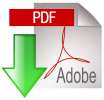| Review Article | 
|  |
IJMDC. 2024; 8(9): 2560-2565 Renal colic in the emergency department, clinical features, and diagnosisMazi Mohammed Mazi, Atheer Faisal Almutairi, Abdulmajeed Mansour Aldawsari, Gehan Khalid Mubaraki, Muneer Ahmad Mohammed Bakr, Ibrahim Fuad I. Al Khoofy, Khalid Ibrahim Alkharashi, Meshal Ali Alanazi, Mohannad Omar Aljohani, Abdulaziz Fahad D. Almutairi. Abstract |  Download PDF Download PDF | |  Post Post | A study was conducted by reviewing the literature regarding renal colic (RC) in the emergency department (ED) to determine the diagnostic value of the physical examination, patient history, imaging results, and laboratory test, either alone or in conjunction with one another. The Preferred Reporting Items for Systematic Reviews and Meta-Analyses statement was followed in the course of this systematic review investigation. A comprehensive search was performed from 2018 to 2023 using MEDLINE, Google Scholar, and EMBASE to find published English-language studies assessing the diagnostic value of clinical symptoms and signs, clinical examination, imaging, and laboratory investigations for RC diagnosis. The study was limited to adult patients suspected of having RC and presenting with severe pain of unknown cause. It was found that Acupuncture is safe, quick, and significantly less painful than sham acupuncture for patients with RC when combined with an intramuscular injection of diclofenac. A diagnostic approach that excludes ureteric calculi solely based on the lack of hydronephrosis, hematuria, or both might miss a very small number of stones. By using the straightforward and helpful STONE score at the emergency room, patients with RC can avoid needless CT scans in addition to saving money and ionizing radiation exposure. It was concluded that the CHOKAI score performs better in terms of diagnostic performance than the STONE score.
Key words: Renal colic, emergency department, diagnosis, clinical features
|
|
|
|

